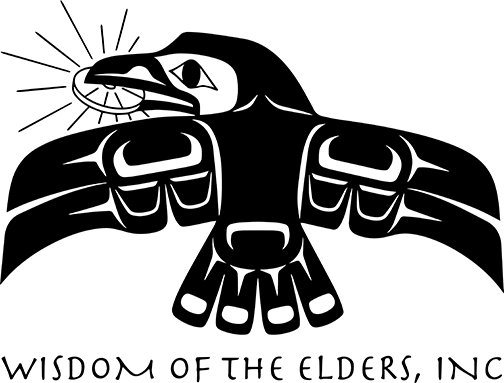
View of Tamástslikt looking south to the Blue Mountains. Credit: Oregon Tourism Commission. Courtesy Tamástslikt Cultural Institute.
Historical Introduction:
Confederated Tribes of the Umatilla Indians
with Arlie Neskahi
Arlie Neskahi:
Welcome to Wisdom of the Elders. I’m Arlie Neskahi.
It was a cool October morning. Ragged waves hissed on the rocky beach and the big river coursed with power into the west. The Walla Walla headman, Yellepit, strode into the camp of the travelers with his colleagues. They were greeted by the two captains of the travelers’ party, Lewis and Clark. Speaking in signs, Yellepit welcomed the white men to his country. As they sat on a blanket and smoked, Yellepit must have noticed that the white men were well organized and armed with American guns.

Fort Nez Perces (Walla Walla) at the confluence of the Walla Walla and Columbia rivers, 1855. (OrHi 1651). Courtesy National Park Service.
Roberta Conner:
The Lewis and Clark Expedition, or the northwestern corps of discovery, was in the homeland of our people for about a week on the way out in 1805 and the week on the way back in 1806.
Neskahi:
Roberta Conner is the director of the Tamástslikt Cultural Institute on the Umatilla Indian reservation.
Conner:
Lewis and Clark in their encounters with our people noted a number of things about our people, amongst them their hospitality, their honesty, their sincerity, their handsomeness, the abundance of fish, the presence of our horses that they admired.
Neskahi:
It was october 19 th, 1805. Lewis and Clark camped just down river from wallula gap near today’s Washington-Oregon state line. They had invited yellipit to join them, for they were informed that he was “the first chief of all the tribes in this quarter.”
Conner:
By the time Lewis and Clark arrived here our people had been engaged in trade for thousands and thousands of years. Commerce was important to us and that is why our people were hospitable to the explorers, because they represented the opportunity to create a monopoly in trade, if they would help establish a trading post in our area.
Neskahi:
Yellepit was eager to establish trade relations with the whites. Guns would protect his people from their enemies. American goods would give them trading clout with their neighbors and ease the burden of their lives. Tin pots, for example, were so valuable that Yellepit would trade a good white horse for one.
Conner:
There were prophecies that a new people would come and our lives would change. And the prophecies talked about how this life would be difficult for our people for a good deal of time, and then it would change again.
Neskahi:
In 1818 Yellepit got his wish. The northwest company built a trading post called fort nez perces across the river from Yellepit’s village near the mouth of the Walla Walla. The fort ushered in a brief era of prosperity to the local tribes. But commerce also brought conflict.
In the twenty-first century, the Confederated Tribes of the Umatilla Indian Reservation are experiencing a cultural renaissance. The longhouse holds weekly Washat services. The tribes’ Tamástslikt Cultural Institute, built in 1996, is a world class museum, highlighting the culture and history of the tribes, and providing an archive for tribal treasures. Crow shadow institute is an art school and printing shop attracting Native artists from around the country. The wild horse casino and resort near Pendleton, Oregon, has brought in enough income for the tribe to start buying back ancestral land, and to generate many other beneficial projects. Two hundred years later, Yellepit’s vision of prosperity for his people is at last becoming a reality.
I’m Arlie Neskahi, and this is Wisdom of the Elders.
